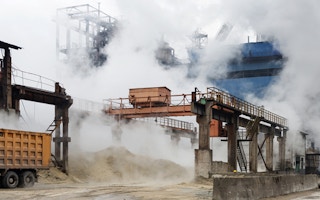Emission-cutting projects overseen by the United Nations will probably reduce supply of credits into international markets as developing nations set up alternative programs at home, according to GDF Suez SA.
China’s preliminary plan for a national greenhouse-gas market published last week means projects will now be more inclined to use programs within their own country, said Philipp Hauser, vice president, carbon markets at GDF Suez Energy Latin America, a unit of the world’s biggest utility. China’s move may be followed by others and credits changing hands this week for 50 euro cents ($0.61) a metric ton may rise to a “few euros” by 2020, he said yesterday from Rio de Janeiro.
An increased tendency to hold rather than sell carbon credits is underpinned by developing nations joining richer countries in accepting emission limits from 2020, under the UN process of tabling climate contributions through July next year.
Measures announced by Mexico, South Africa and South Korea will already add to demand, GDF Suez said. 2015 CERs have plunged 97 per cent since 2011 as demand in Europe dried up, settling yesterday at 52 cents a ton on ICE Futures Europe in London.
Projects “will think twice before selling at 50 cents” in the UN market because they will bet they can get a higher price in their own country, Hauser said.
An important element of China’s rules is that they place similar values on emission allowances to be allocated by the nation’s provinces from about 2016 and the project-based credits, or China CERs, he said. That may encourage companies to create CCERs instead of UN CERs, depending on details of the rules, he said.
Clean investments
The rules will spur clean investments in China, the biggest supplier of UN CERs, because projects can be fairly sure of obtaining a credit that can be sold to the factories covered by the market, Hauser said.
Issuance of UN CERs will fall 59 per cent to about 108 million tonnes this year, according to UN data compiled by Bloomberg. CERs are created under the Clean Development Mechanism of the 1997 Kyoto Protocol.
Project developers and certification companies in the carbon markets probably are already considering rehiring people after shedding employees as prices dropped, said Jeff Swartz, international policy director at the International Emissions Trading Association in Geneva.
To spur additional investment, climate envoys need to provide investors with guidance on measuring, reporting and trading rules, Swartz said yesterday by phone.
Accounting issues
“Accounting is such a crucial issue in the UN Framework Convention on Climate Change negotiations,” he said. “Rules for CCERs are still in the early stages of development.”
There is now a “clear tendency” for emerging nations to favor CERs as an option to provide emission reductions, Hauser said. “This is very encouraging, not only because it yields net mitigation, but also because it allows immediate indirect linking of the emerging domestic schemes to the international demand.”
Other potential areas of demand for CERs include the aviation and shipping industries and projects may also seek to supply non-Kyoto Protocol buyers such as those in Japan and North America, as well as the voluntary markets, he said.
Factories and power stations in the EU may use CERs as well as Emission Reduction Units from other developed countries to cover 1.54 billion tons of greenhouse-gas emissions through 2020, according to Bloomberg New Energy Finance in London. EU installations have used 1.2 billion CERs and ERUs from January 2008 through October.
CERs for emission cuts before Dec. 31, 2012, can’t be used after March 31 in the EU’s emissions trading system nor by nations with climate targets under the Kyoto Protocol.










